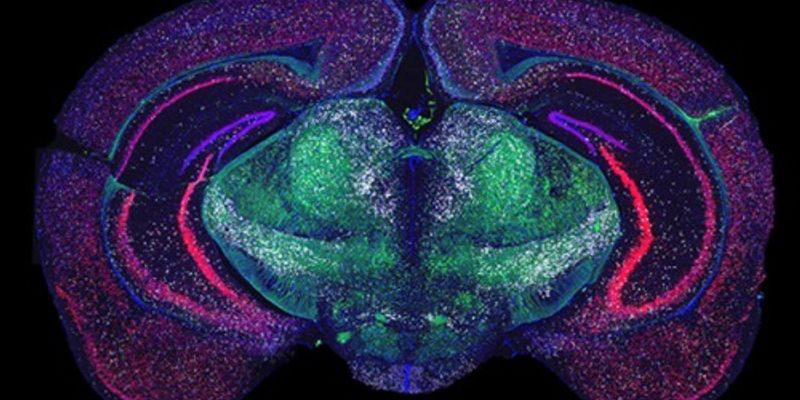Transcriptomics
Transcriptomics: is the study of the transcriptome-the complete set of RNA transcripts that are produced by the genome, under specific circumstances or in a specific cell-using high-throughput methods, such as microarray analysis.
-
AUG 20, 2014 | 7:00 AMThe ENCODE and modENCODE consortia have generated a resource containing large amounts of transcriptomic data, extensive mapping of chromatin states, as well as the binding locations of >30...Pharmcogenomics (PGx) is the 2nd potential clinical application of genomic medicine, preceded by genomic application for cancer. In the recently published, 2012 Institute of Medicine report o...Speaker: Steven Wong, PhD, DABCC(TC), FACB
MAR 20, 2014 | 1:00 PM
Using high throughput next-generation sequencing to simultaneously search large number of genes for pathogenic mutations has numerous advantages. It decreases the pressure to narrow the dif...
FEB 19, 2014 | 9:00 AM
Genome sequencing technologies have enabled a rapid expansion into understanding cancer biology, drug development, and treatment resistance. Research in our laboratory has focused on the app...
Speaker:
Milan Radovich, PhD
NOV 20, 2013 | 11:00 AM
...
Speaker:
Dan Rhodes, PhD
The NCI's Therapeutically Applicable Research to Generate Effective Treatments (TARGET) is a comprehensive genomic characterization initiative to determine the molecular changes that drive th...
Speaker:
Jaime Guidry Auvil, PhD
OCT 17, 2013 | 1:00 PM
C.E. CREDITS
Invading cancer cells leave the tumor to form distant metastases and are ultimately responsible for 90% of deaths in cancer. Reducing the ability of cancer cells to invade and metastasize cou...
Speaker:
Milan Radovich, PhD
OCT 17, 2013 | 9:00 AM
DNASTAR offers an integrated suite of software for assembling and analyzing data from all major next-generation sequencing platforms. The software supports a variety of reference guided and d...
Speaker:
Matthew Keyser, MS
OCT 17, 2013 | 6:00 AM
The widespread adoption of precision medicine in oncology requires: a compendium of therapies targeting the genetic vulnerabilities of cancer; the diagnostic tools capable of generating a pr...
Speaker:
Dan Rhodes, PhD
OCT 16, 2013 | 12:00 PM
The effective implementation of personalised cancer therapeutic regimens depends on the successful identification and translation of informative biomarkers to aid clinical decision making. Th...
Speaker:
William M. Gallagher, PhD.
AUG 22, 2013 | 4:00 PM
C.E. CREDITS
The next generation sequencing technologies are profoundly influencing our way to study biology. We have previously developed cap-analysis gene expression (CAGE) to simultaneously mRNA/noncod...
AUG 22, 2013 | 10:00 AM
C.E. CREDITS
In this presentation, exome data from individuals with prostate cancer will be aligned against an annotated reference human genome and SNPs will be identified using DNASTARs SeqMan NGen softw...
AUG 21, 2013 | 4:00 PM
C.E. CREDITS
High throughput transcriptomic analyses have shown that most of the human genome is dynamically transcribed to produce an extraordinary range of overlapping and interlacing intronic, intergen...
Speaker:
John Mattick, PhD,AO, FAA, FRCPA
Presented at: Genetics and Genomics Virtual Event Series 2013
RNASeq has become the primary method for studying changes in gene expression in modern genomics research. By directly sequencing the various types of RNA molecules, including mRNA, ncRNA, an...
Speaker:
Alisa Jackson, Zach Smith, Mary Blair, Dave Delano
Presented at: Genetics and Genomics Virtual Event Series 2013
Personalized medicine is expected to benefit from the combination of genomic information with the global monitoring of molecular components and physiological states. To ascertain whether this...
AUG 20, 2014 | 7:00 AM
The ENCODE and modENCODE consortia have generated a resource containing large amounts of transcriptomic data, extensive mapping of chromatin states, as well as the binding locations of >30...
Pharmcogenomics (PGx) is the 2nd potential clinical application of genomic medicine, preceded by genomic application for cancer. In the recently published, 2012 Institute of Medicine report o...
Speaker:
Steven Wong, PhD, DABCC(TC), FACB
MAR 20, 2014 | 1:00 PM
Using high throughput next-generation sequencing to simultaneously search large number of genes for pathogenic mutations has numerous advantages. It decreases the pressure to narrow the dif...
FEB 19, 2014 | 9:00 AM
Genome sequencing technologies have enabled a rapid expansion into understanding cancer biology, drug development, and treatment resistance. Research in our laboratory has focused on the app...
Speaker:
Milan Radovich, PhD
NOV 20, 2013 | 11:00 AM
...
Speaker:
Dan Rhodes, PhD
The NCI's Therapeutically Applicable Research to Generate Effective Treatments (TARGET) is a comprehensive genomic characterization initiative to determine the molecular changes that drive th...
Speaker:
Jaime Guidry Auvil, PhD
OCT 17, 2013 | 1:00 PM
C.E. CREDITS
Invading cancer cells leave the tumor to form distant metastases and are ultimately responsible for 90% of deaths in cancer. Reducing the ability of cancer cells to invade and metastasize cou...
Speaker:
Milan Radovich, PhD
OCT 17, 2013 | 9:00 AM
DNASTAR offers an integrated suite of software for assembling and analyzing data from all major next-generation sequencing platforms. The software supports a variety of reference guided and d...
Speaker:
Matthew Keyser, MS
OCT 17, 2013 | 6:00 AM
The widespread adoption of precision medicine in oncology requires: a compendium of therapies targeting the genetic vulnerabilities of cancer; the diagnostic tools capable of generating a pr...
Speaker:
Dan Rhodes, PhD
OCT 16, 2013 | 12:00 PM
The effective implementation of personalised cancer therapeutic regimens depends on the successful identification and translation of informative biomarkers to aid clinical decision making. Th...
Speaker:
William M. Gallagher, PhD.
AUG 22, 2013 | 4:00 PM
C.E. CREDITS
The next generation sequencing technologies are profoundly influencing our way to study biology. We have previously developed cap-analysis gene expression (CAGE) to simultaneously mRNA/noncod...
AUG 22, 2013 | 10:00 AM
C.E. CREDITS
In this presentation, exome data from individuals with prostate cancer will be aligned against an annotated reference human genome and SNPs will be identified using DNASTARs SeqMan NGen softw...
AUG 21, 2013 | 4:00 PM
C.E. CREDITS
High throughput transcriptomic analyses have shown that most of the human genome is dynamically transcribed to produce an extraordinary range of overlapping and interlacing intronic, intergen...
Speaker:
John Mattick, PhD,AO, FAA, FRCPA
Presented at: Genetics and Genomics Virtual Event Series 2013
RNASeq has become the primary method for studying changes in gene expression in modern genomics research. By directly sequencing the various types of RNA molecules, including mRNA, ncRNA, an...
Speaker:
Alisa Jackson, Zach Smith, Mary Blair, Dave Delano
Presented at: Genetics and Genomics Virtual Event Series 2013
Personalized medicine is expected to benefit from the combination of genomic information with the global monitoring of molecular components and physiological states. To ascertain whether this...












